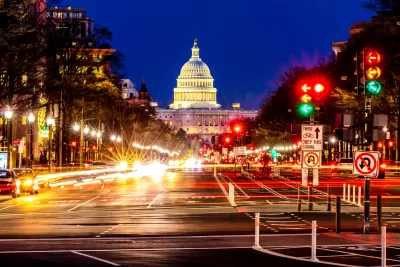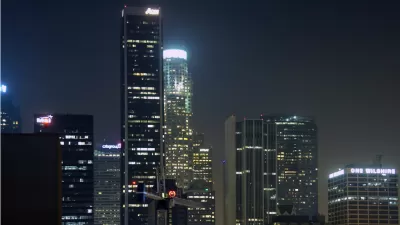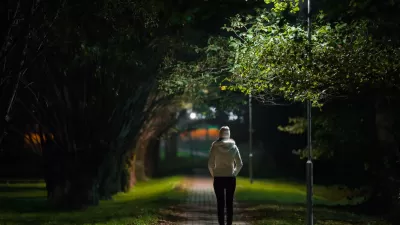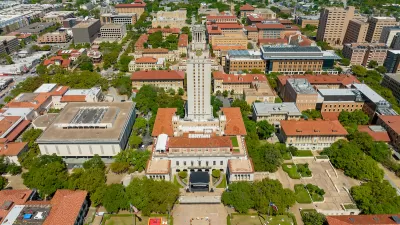New LED lighting has raised concerns about the health and environmental impacts of excessive or harsh lighting.

According to an article by Kirsten Errick in Route Fifty, “Washington, D.C.’s decision to install new energy-efficient LED streetlights to reduce greenhouse gas emissions and costs is garnering attention from environmentalists who are concerned about the bright lights’ impact on people and wildlife.” As Errick points out, “The district is part of the 80% of North Americans that cannot see the Milky Way.”
The D.C. case highlights the conflict between energy efficiency and the practical benefits of urban lighting and the negative impacts of light pollution. The project will save the District an estimated $2.5 million per year in energy costs, and LEDs can last five times as long as incandescent bulbs. But residents are already noticing the harsher lights, which can affect sleep and disturb human and animal circadian rhythms.
“Even before the district’s LED project, the city was already excessively lighting its streets, s. It is unclear why the district overlights, but the city is currently not considering making changes to this practice, according to city officials.” Errick notes that “Current non-LED lights in the district are approximately seven times the national lighting standard, recommended by the American Association of State Highway and Transportation Officials, while the new LED lights will only be two to three times as bright as the standard.”
Dark sky experts like Jim Dougherty of the International Dark Sky Association say cities can accomplish safe street lighting without overlighting, comparing lighting to music: “Music is supposed to be kind of loud, but then cranking up the volume by three more notches doesn’t help you, so you should put it on spec,” Dougherty said.
FULL STORY: LEDs Bring Energy Savings—and Light Pollution

Alabama: Trump Terminates Settlements for Black Communities Harmed By Raw Sewage
Trump deemed the landmark civil rights agreement “illegal DEI and environmental justice policy.”

Study: Maui’s Plan to Convert Vacation Rentals to Long-Term Housing Could Cause Nearly $1 Billion Economic Loss
The plan would reduce visitor accommodation by 25% resulting in 1,900 jobs lost.

Why Should We Subsidize Public Transportation?
Many public transit agencies face financial stress due to rising costs, declining fare revenue, and declining subsidies. Transit advocates must provide a strong business case for increasing public transit funding.

Paris Bike Boom Leads to Steep Drop in Air Pollution
The French city’s air quality has improved dramatically in the past 20 years, coinciding with a growth in cycling.

Why Housing Costs More to Build in California Than in Texas
Hard costs like labor and materials combined with ‘soft’ costs such as permitting make building in the San Francisco Bay Area almost three times as costly as in Texas cities.

San Diego County Sees a Rise in Urban Coyotes
San Diego County experiences a rise in urban coyotes, as sightings become prevalent throughout its urban neighbourhoods and surrounding areas.
Urban Design for Planners 1: Software Tools
This six-course series explores essential urban design concepts using open source software and equips planners with the tools they need to participate fully in the urban design process.
Planning for Universal Design
Learn the tools for implementing Universal Design in planning regulations.
Smith Gee Studio
Alamo Area Metropolitan Planning Organization
City of Santa Clarita
Institute for Housing and Urban Development Studies (IHS)
City of Grandview
Harvard GSD Executive Education
Toledo-Lucas County Plan Commissions
Salt Lake City
NYU Wagner Graduate School of Public Service





























